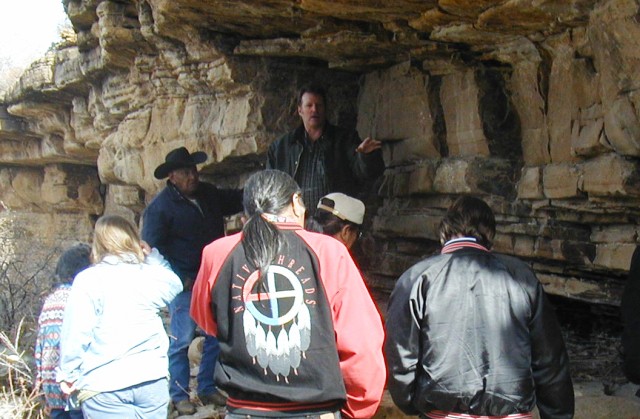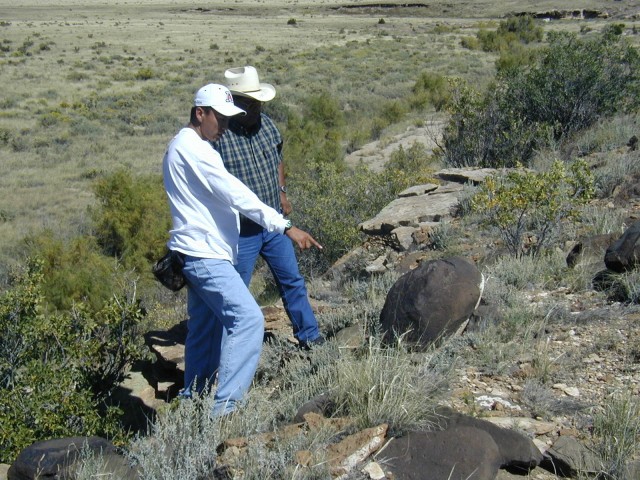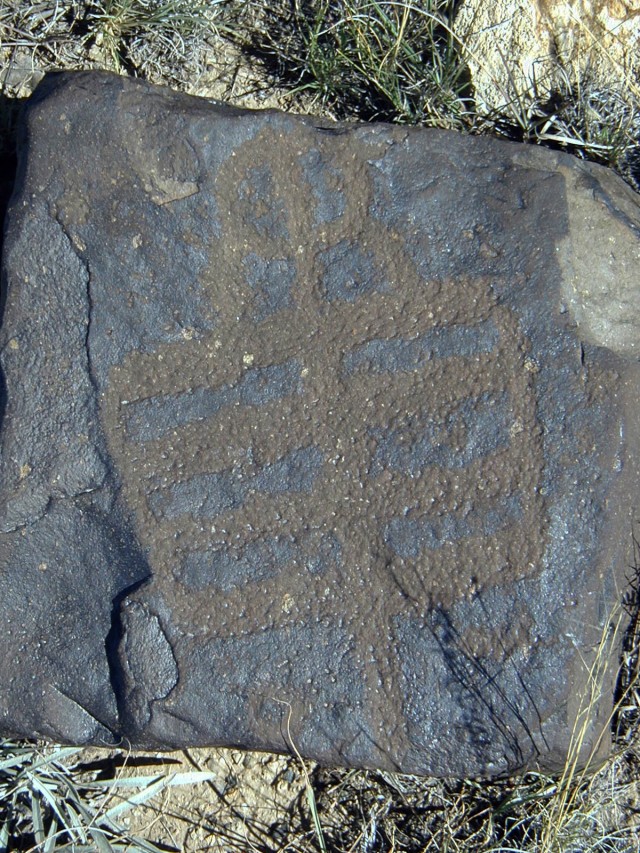FORT CARSON, Colo. -- With the recent increase in construction on Fort Carson, a Directorate of Public Works program has kept busy ensuring that tribal cultural or sacred sites are not impacted.
All federal agencies must comply with Section 106 of the National Historic Preservation Act of 1966 when it comes to protection of historic or cultural sites. A 2001 amendment required the inclusion of sites of interest to Native American tribes, but Fort Carson's protection of such areas began back in the 1980s, said Pamela Miller, manager, Cultural Resources Management Program, Directorate of Public Works Environmental Division.
There are 13 tribes with cultural affiliation to Fort Carson and PiAfA+-on Canyon Maneuver Site lands, and the program's staff coordinates with tribal representatives whenever construction or training may impact the tribal sites, Miller said.
"We have to go through a process of consultation with the ... tribes to determine that our action is not going to have an adverse effect on something that is significant or eligible for the National Register of Historic Places," she said.
The program's staff also gives a block of instruction in the Environmental Protection Officer's course for units on Fort Carson to explain how protecting the sites can affect their training.
"We work with the trainers and with the troops to let them know various places that they cannot go," Miller said. "If there is some type of training that needs to occur, then we will go through the consultation process to make sure that we are avoiding those or mitigating for any adverse effects to the site.
"The only things restricted 100 percent to training - no training whatsoever - are the sacred sites. In our other (protected) sites, dismounted training is allowed. So, there is very, very, very little that is 100-percent restricted due to cultural resources."
Miller noted that protection of the cultural and sacred sites has never stopped training or construction on Fort Carson.
Nearly 85 percent of Fort Carson and 88 percent of PCMS have been surveyed - a requirement before any of the land can be used for construction or training, Miller said.
"With our 335,000 ... total acreage between the two installations, having that percentage surveyed is actually quite a feat," Miller said. "Fort Carson has taken a very proactive approach over the years to survey (the land)."
The staff has a standing operating procedure for the inadvertent discovery of cultural artifacts or graves, which are covered under the Native American Graves Protection and Repatriation Act, or NAGPRA, she said.
"The last time we had a NAGPRA we had to initiate was at PiAfA+-on Canyon in 2004. Two burials were discovered ... during archeological excavation. They were buried in the same rock shelter, but ... about 500 years apart," Miller said. "Because of the NAGPRA SOP that we have and the agreement that we have with our tribes, there was no further excavation or study of the bones. If it's feasible - if they weren't discovered because of erosion or because the burial site is falling out of the side of a hill or something - then it is reburied in place. We bring the tribes in to do burial ceremonies."
The tribes can also arrange to visit cultural or sacred sites as often as they like - depending on training and weather, Miller said.
"They just need to ... tell me when they want to come and what they want to come for, and then we work with the trainers or work around the training," she said.
Although the staff regularly consults with tribal representatives, it also held a special Department of Defense consult Feb. 22-26. The American Indian Communications Course and Government-to-Government Consultation included visits from the Department of Defense and Army representatives and a reception at the home of 4th Infantry Division and Fort Carson Commanding General Maj. Gen. David G. Perkins and his wife, Ginger, Miller said.
The event also consisted of training, a workshop, a tribal meeting and discussions on how to improve the consultation process - something that doesn't seem to be an issue between Fort Carson and the tribes affiliated with it.
"We've got a very positive relationship with our tribes," Miller said.






Social Sharing